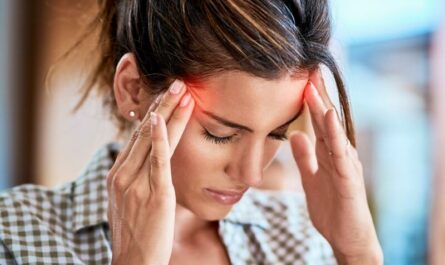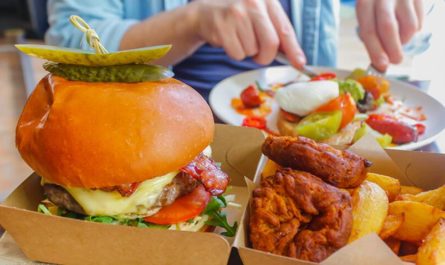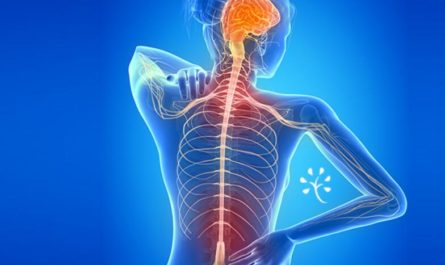Left upper quadrant (LUQ) pain is abdominal pain in the upper-left side of the abdomen. It can range from mild to severe and can be caused by various conditions, including digestive disorders, urinary tract infections, and even liver or gallbladder issues.
Fortunately, In most cases, the pain may last only a few days and go without treatment. However, in some cases, pain in your left upper quadrant could signal something more serious, like kidney infections or an enlarged spleen. This article discusses 16 causes of left upper quadrant pain with treatment.
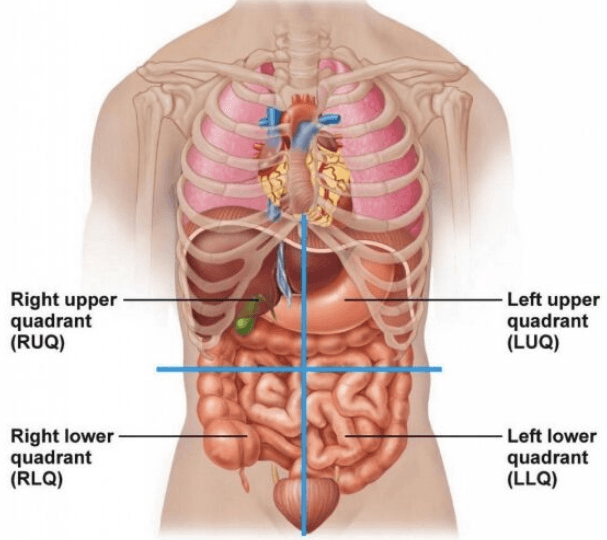
Organs in the left upper quadrant
If you’re wondering where your left upper quadrant is, go to a mirror and mentally divide your tummy into 4 quadrants. The quadrant on the uppermost area below your ribs is your left upper quadrant (LUQ).
Spleen: The spleen is a soft, spongy organ behind the stomach. It filters blood, stores red blood cells, and produces antibodies to fight infection.
Stomach: The stomach is also located in the left upper quadrant and is responsible for breaking down food and absorbing nutrients.
Pancreas: The pancreas is located behind the stomach and plays an essential role in digestion, producing digestive enzymes and hormones.
Left kidney: The left kidney is located just below the ribcage and helps to filter waste and excess fluid from the body.
Left liver: The left lobe of the liver is also located in the left upper quadrant. The liver is a vital organ that performs several essential functions. It produces bile, which helps to digest food, detoxifies harmful substances, and produces proteins that help to clot blood.
The Left lung: The left lobe of the lung is located in the left upper quadrant and is responsible for oxygenating the blood.
Left adrenal gland: The left adrenal gland is located just above the kidney and produces hormones that help the body regulate blood pressure, metabolism, and other essential functions.
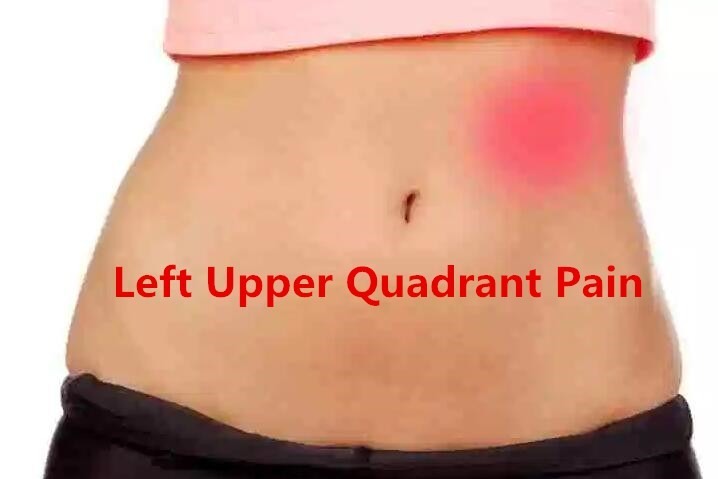
16 Common Causes of Left Upper Quadrant Pain
Since your left upper quadrant is home to many critical abdominal organs, several factors could trigger abdominal pain in your LUQ. Conditions that could cause left upper quadrant pain include:
1. Pancreatitis
Pancreatitis is an inflammation of the pancreas, a small organ located in the upper left abdomen just below the rib cage. When the pancreas becomes inflamed, it can cause pain and discomfort in the left upper quadrant (LUQ) of the abdomen.
Common causes of pancreatitis include alcohol abuse, high levels of fat in the blood, certain medications, and certain genetic disorders. Alcohol abuse is one of the leading causes of pancreatitis and can cause the pancreas to become inflamed.
In addition, high levels of fat in the blood, or hyperlipidemia, can also cause the pancreas to become inflamed.
Treatment for pancreatitis usually involves dietary changes, medications, and lifestyle modifications. It is important to seek medical advice if you are experiencing pain and discomfort in the LUQ of the abdomen.
2. Enlarged spleen (Splenomegaly)
The spleen is an organ located in the upper left of the abdomen and is responsible for filtering the blood, storing red blood cells, and fighting infection. When the spleen enlarges, it can cause pain in the left upper quadrant due to the increased pressure on the surrounding organs and tissue.
The causes of splenomegaly vary, but the most common causes are infections, blood clotting abnormalities, certain types of cancer, and autoimmune diseases.
Treatment for splenomegaly depends on the underlying cause. If the cause is an infection, antibiotics may be prescribed to treat the infection. If the cause is a blood clotting disorder or cancer, the patient may need to take medications to treat the underlying condition.
3. Irritable bowel syndrome (IBS)
Irritable Bowel Syndrome (IBS) is a common gastrointestinal disorder that can cause left upper quadrant abdominal pain. IBS is a chronic condition that affects the large intestine and is characterized by abdominal pain, bloating, and changes in bowel movements.
Left upper quadrant pain is a common symptom of IBS, though the exact cause of the pain is still unknown. The cause of IBS is still unclear. However, it is believed to be related to a combination of factors. These include genetics, hormonal changes, abnormal contractions of the intestine, food sensitivities, and stress.
IBS may also be caused by an imbalance of bacteria in the gut. IBS can also cause left upper quadrant pain due to the irritation and inflammation of the large intestine. The pain is usually mild and can be relieved with over-the-counter medications or changes in diet.
It is important to seek medical advice if the pain worsens or persists for over a few days.
4. Pneumonia
Pneumonia is an infection of the lungs that can cause serious complications, including left upper quadrant pain. This type of pain is usually caused by inflammation in the left lung, which can be caused by the presence of fluid in the lung or by an infection in the airway.
The pain can range from mild to severe, often worsening when the affected lung is moved or when the person takes a deep breath. Common symptoms of pneumonia include fever, chills, difficulty breathing, and chest pain.
In some cases, the pain from pneumonia can be felt in the left upper quadrant of the abdomen. This pain can be sharp or dull and may be constant or intermittent.
Treatment for pneumonia includes antibiotics as well as rest and hydration. If left untreated, pneumonia can lead to serious complications, such as sepsis or even death. It is important to seek medical help immediately if you experience any symptoms of pneumonia.
5. Gastroesophageal reflux disease (GERD)
Gastroesophageal reflux disease (GERD) is a condition in which the stomach contents flow back up into the esophagus, resulting in an uncomfortable burning sensation in the chest commonly known as heartburn. In some cases, GERD can cause left upper quadrant (LUQ) pain. This is due to the reflux irritating the nerves around the stomach and the esophagus.
The most common symptom of GERD-induced LUQ pain is a burning sensation in the left upper side of the abdomen or chest. This pain can range from mild to severe and can be accompanied by other symptoms such as nausea, vomiting, and difficulty swallowing. Sometimes, the pain may be sharp and stabbing and can linger for several minutes.
To treat GERD-induced LUQ pain, doctors typically recommend lifestyle changes, such as avoiding spicy and acidic foods, quitting smoking, and avoiding alcohol.
6. Gastritis
Gastritis is an inflammation of the stomach lining that can cause Left Upper Quadrant (LUQ) pain. The pain is usually located in the upper left abdomen and can range from mild to severe. It is usually caused by an infection, such as a virus or bacterial infection, or by using certain medications.
The most common causes of gastritis are long-term use of non-steroidal anti-inflammatory drugs (NSAIDs) and Helicobacter pylori infection. In addition, long-term use of NSAIDs can also cause gastritis and LUQ pain. Other causes of LUQ pain associated with gastritis include alcohol use, smoking, chronic stress, and certain foods and beverages.
Gastritis and LUQ pain can often be managed with lifestyle changes, such as avoiding alcohol, smoking, and certain foods and beverages. In addition, medications such as antibiotics and antacids can help reduce inflammation and relieve pain.
7. Gastroenteritis
Gastroenteritis is an inflammation of the stomach and intestines usually caused by an infection. Symptoms of gastroenteritis include abdominal pain, nausea, vomiting, diarrhea, and fever. Other symptoms of gastroenteritis, such as nausea and vomiting, can also contribute to left upper quadrant pain.
The cause of gastroenteritis is usually an infection from bacteria, viruses, or parasites. It can also be caused by food poisoning or a reaction to certain medications. Gastroenteritis is highly contagious and can be spread via contaminated food or water, direct contact with an infected person, or airborne droplets.
Treatment of gastroenteritis usually involves rest, fluids, and over-the-counter medications to relieve symptoms. Antibiotics are typically not recommended unless bacteria cause the infection. In severe cases, hospitalization may be necessary.
8. Peptic ulcer
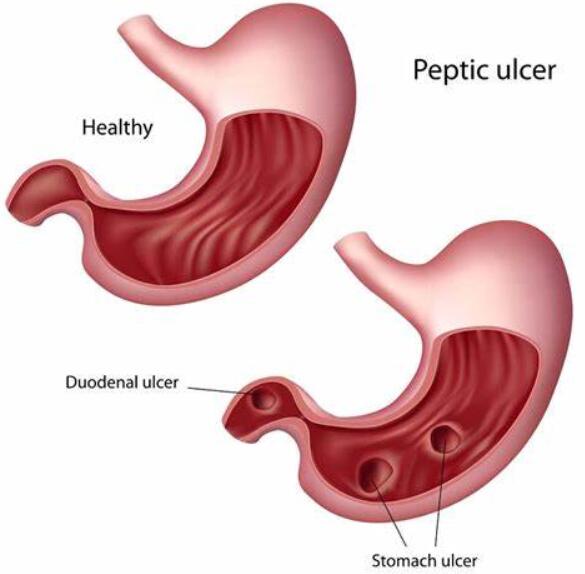
A peptic ulcer is a common medical condition that can result in left upper quadrant (LUQ) pain. It is a sore or lesion found in the lining of the stomach or small intestine caused by bacteria, certain medications, or stress.
The main symptom of a peptic ulcer is a burning or gnawing pain in the LUQ. It may also accompany other symptoms such as nausea, vomiting, indigestion, and bloating.
The most common cause of peptic ulcer is infection with Helicobacter pylori bacteria. Certain medications, such as aspirin and non-steroidal anti-inflammatory drugs (NSAIDs), can also lead to peptic ulcers.
Treatment for peptic ulcer includes antibiotics for Helicobacter pylori, medications to reduce stomach acid, and lifestyle changes such as avoiding certain foods and reducing stress. If left untreated, peptic ulcers can cause serious complications, such as bleeding and perforation of the stomach lining.
9. Cancer
Cancer cause left upper quadrant pain. This type of pain is often caused by tumors growing in the organs of the left upper quadrant, such as the stomach, pancreas, and spleen. It can also be caused by the metastatic spread of the tumor to the lymph nodes in the area.
Symptoms of left upper quadrant pain can include sharp, localized pain, a feeling of fullness in the abdomen, and nausea. People may also experience unintentional weight loss, fatigue, and fever.
Depending on the type and extent of cancer, chemotherapy may be used to shrink or destroy the tumor or to slow its growth. Radiation therapy is typically used to target tumors that can’t be surgically removed or to help reduce the tumor size before surgery.
10. Pregnancy
Pregnancy can cause left upper quadrant (LUQ) pain for many reasons. The most common cause of LUQ pain in pregnant women is due to the enlarging uterus pushing against the ribs and organs in the abdomen. This can cause pressure on the stomach and other organs, leading to sharp, aching, or burning pain.
Sometimes, this pain can be severe enough to interfere with daily activities. Another possible cause of LUQ pain during pregnancy is referred pain from the pelvic area. As the baby grows and the uterus expands, the ligaments and muscles in the pelvic area can become strained. This can cause pain to radiate up to the LUQ, often described as a dull ache.
Other possible causes of LUQ pain during pregnancy include abdominal muscle strain, indigestion, constipation, and gas. In most cases, LUQ pain during pregnancy is not serious and can be managed with rest, gentle stretching, and over-the-counter medications.
11. Gallbladder Disease
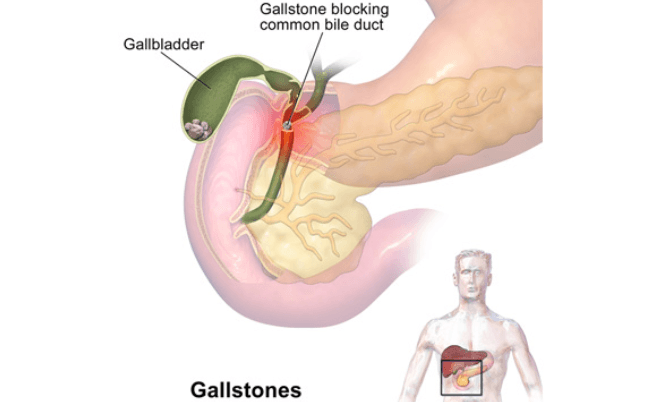
Gallbladder disease is a common condition that can cause left upper quadrant pain. The gallbladder is an organ in the digestive system responsible for storing bile produced by the liver and releasing it into the small intestine. When the gallbladder becomes diseased, it can cause symptoms such as pain, nausea, vomiting, and jaundice.
Left upper quadrant pain is a common symptom of gallbladder disease. This pain can be sharp and can spread to the back or shoulder. Other symptoms of gallbladder disease include nausea, vomiting, fever, chills, and jaundice.
Some of the most common causes of gallbladder disease include gallstones, infection, inflammation, and scarring. Gallstones are one of the most common causes of gallbladder disease.
If you experience left upper quadrant pain and suspect gallbladder disease, it is important to contact your doctor as soon as possible.
12. Food poisoning
Food poisoning is a common cause of upper left abdominal pain. It occurs when food is contaminated with bacteria, viruses, or parasites.
Symptoms typically begin within hours of consuming the contaminated food and can include nausea, vomiting, diarrhea, abdominal cramps, and fever. In severe cases, food poisoning can lead to dehydration, organ failure, or even death.
The upper left abdominal pain associated with food poisoning is usually due to inflammation of the intestines caused by the toxins produced by the bacteria, virus, or parasite.
This inflammation can cause cramping and pain in the upper left abdomen. Other symptoms of food poisoning, such as nausea, vomiting, diarrhea, and fever, may also be present.
If you experience upper left abdominal pain and suspect it may be due to food poisoning, it is important to see a doctor and get treatment as soon as possible.
13. Kidney Stones
Kidney stones are hard deposits of minerals and salts that form in the kidneys and can cause severe pain in the upper left abdomen.
Symptoms may include sharp, cramping pain in the left side of the abdomen or back, nausea and vomiting, and cloudy or foul-smelling urine.
Depending on the size and location of the stones, they may pass without medical intervention or require medications or surgery.
14. Appendicitis
Appendicitis is inflammation of the appendix, a finger-shaped organ in the lower right abdomen. Symptoms may include pain and tenderness in the upper left abdomen, nausea and vomiting, and fever.
Appendicitis is a medical emergency and requires prompt medical attention. Treatment typically involves antibiotics and surgery to remove the appendix.
15. Crohn’s disease
Crohn’s Disease is an inflammatory bowel disease that can cause left upper quadrant pain. It is a chronic condition that can cause inflammation in any part of the gastrointestinal tract, from the mouth to the anus.
The cause of Crohn’s is unknown, but it is considered an autoimmune disorder. Symptoms of Crohn’s in the left upper quadrant can include abdominal pain, cramping, nausea, vomiting, weight loss, and fatigue. Pain in the left upper quadrant is usually due to inflammation of the intestine in that area.
Treatment for Crohn’s can include medications to reduce inflammation, dietary changes, and surgery to remove the affected parts of the intestine.
16. Angina
Angina is a type of chest pain that is caused by reduced blood flow to the heart. This decreased blood flow can cause the heart to not receive enough oxygen, leading to left upper quadrant pain. This pain is typically localized to the chest but can also be felt in the left shoulder and arm, as well as the neck and jaw.
The most common cause of angina is coronary artery disease, which is a narrowing of the arteries. This narrowing is caused by plaque buildup, which comprises fat, cholesterol, calcium, and other substances. This buildup can reduce the amount of oxygen-rich blood that reaches the heart and cause pain and discomfort.
Angina is a serious condition and should be treated by a physician. Treatments may include lifestyle changes, such as a healthier diet and exercise, as well as medications and surgery. It is important to be aware of the signs and symptoms of angina and to seek medical attention as soon as possible.
Treatments for Upper Left Abdominal Pain
Diet Modification
Incorporating dietary changes such as avoiding foods that cause acid reflux or stomach irritation, reducing the amount of fat, and increasing the amount of fiber.
This can help reduce upper left abdominal pain. In addition, eating smaller, more frequent meals and avoiding late at night can also help reduce symptoms.
Stress Management
Identifying and managing sources of stress can help reduce upper left abdominal pain. This can include exercise, relaxation techniques such as deep breathing, mindfulness, and cognitive behavioral therapy.
Medication
Over-the-counter medications such as antacids or acid blockers can help reduce upper left abdominal pain symptoms. Prescription medications such as H2 blockers and proton pump inhibitors can relieve symptoms.
Physical Therapy
Physical therapy can help reduce upper left abdominal pain by strengthening the abdominal and back muscles, increasing the range of motion, improving posture, and reducing tension in the body.
Heat Therapy
Applying a hot water bottle or heating pad to the area can help reduce pain by increasing blood flow and relaxing the muscles.
Herbal Supplements
Herbal supplements such as ginger, turmeric, and peppermint can help reduce upper left abdominal pain. These supplements can be taken in tea, pill, or tincture form.
Surgery
Surgery may be necessary for some cases of upper left abdominal pain. This may include laparoscopic procedures or open abdominal surgery. Surgery may be recommended if the cause of the pain is a hernia, intestinal obstruction, or tumor.
Common Questions:
What causes intermittent dull pain in the upper left abdomen?
Intermittent dull pain in the upper left abdomen can be caused by various conditions. Gastrointestinal issues such as ulcers, Crohn’s disease, gallbladder stones, and pancreatitis can all cause intermittent dull pain in the upper left abdomen. Other potential causes include gas, constipation, kidney stones, and hernias. The pain may also be related to a pinched nerve or muscle strain.
What causes sharp pain in the lower left quadrant?
Sharp pain in the lower left quadrant can be caused by various medical conditions. It can be due to an infection, abnormal growth, obstruction, or even an injury.
Common causes include appendicitis, diverticulitis, intestinal obstruction, and an abdominal aortic aneurysm. Other possible causes include kidney stones, ovarian cysts, hernias, endometriosis, or an inflamed colon.
The pain may also be caused by a urinary tract infection, an infection of the bladder, or a urinary tract obstruction. If the pain is severe, it is important to seek medical attention as soon as possible.
What causes left upper quadrant pain after eating?
Left upper quadrant (LUQ) pain after eating is a common symptom of many digestive disorders. It can be caused by digestive conditions such as gastritis, gallstones, or peptic ulcers.
The pain is usually located in the upper abdomen, just below the rib cage on the left side of the body. It may be a dull, aching sensation or a sharp, stabbing pain that worsens after eating certain foods.
When should you see a doctor?
The symptoms that could signal something serious include:
- Pain is severe, prolonged, or associated with other worrisome symptoms.
- Feeling a sharp, stabbing, or burning sensation in your upper left abdomen
- Unexpected weight loss
- The pain is accompanied by symptoms such as fever, chills, nausea, or vomiting.
- The pain is not severe, but it’s persistent
- Bloody stools
- The pain worsens over time and affects your ability to do normal activities.
- Other problematic symptoms, including yellowing of the skin or eyes and difficulty breathing, accompany the pain.



